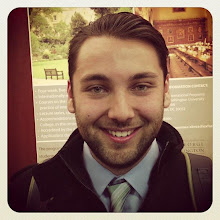Bispebjerg Cemetery was established in 1903, to accommodate the ever-growing and ever-diversifying population of Copenhagen. It has several special sections for Catholics and Muslims, as well as for the victims of the Nazi Occupation of Denmark, both Danish and British. Additionally, it has sections devoted to Swedes as well as several for Russian and German Soldiers. It is certainly a multicultural cemetery. At the main entrance, the rules of the cemetery are explained in a quadralingual sign: in Danish, English, Turkish, and Arabic. Danes maintain their cemeteries much better than Americans do; they are virtually city parks where people happen to be buried. It is a place with well-kept avenues lined with well-manicured trees, as well as areas where more naturally growing flora flourishes. In one of these areas I discovered several of Denmark’s well-known forårsbebuder (heralds of spring), the first wildflowers of the year, marking the true beginning of spring. The birch trees were also undergoing their yearly transformation; shedding their old bark for a new reddish-tan covering that will soon fade back to the distinctive black-and-white by which birch trees are so recognizable.



Not far from the cemetery sits Grundtvig’s Church, a stone-structure built in the 1920’s in Expressionist style. It is named after Denmark’s illustrious Nikolaj Frederik Severin Grundtvig, a scholar and priest from the Danish Golden Age, the first half of the 19th century. He transformed Lutheranism in Denmark, founded the Danish Folk High School system, and encouraged the preservation of Scandinavian mythology and folklore as essential to the national character. He is often credited as the founder of modern Danish national consciousness, and as such is one of the most important Danes of the Golden Age. The church built in his honor is very unique, because it is one of the only expressionist churches built. It is very elongated, reaching to heaven, with a uniform façade of tan bricks. The buildings around the church were built of the same material and style, which gives the whole neighborhood a cohesive aura. Personally, as much as I liked the church, I felt the overall affect was very sterile and inorganic, especially when contrasted with the abundance of the cemetery. It is an interesting paradox that the space dedicated to honoring the dead is most alive, while the space dedicated to celebrating God-given life feels so lifeless. The inside of the church is incredibly simplistic. Plain wooden chairs, not pews, line the nave. There are two simple pulpits, and a brick altar clothed in a white fabric toped by a candelabra. There are no paintings on the walls, and no stained-glass windows. Perhaps it was the conspicuous lack of ornamentation, or the fact that it was the first time I had ever been the only person in such a large church, but it left me with a very strange feeling afterwards. I was glad to be back outside in the fresh spring air, which has finally arrived in Copenhagen, though I will soon be heading south to the Alp Mountains, where I am hoping spring has truly sprung.







